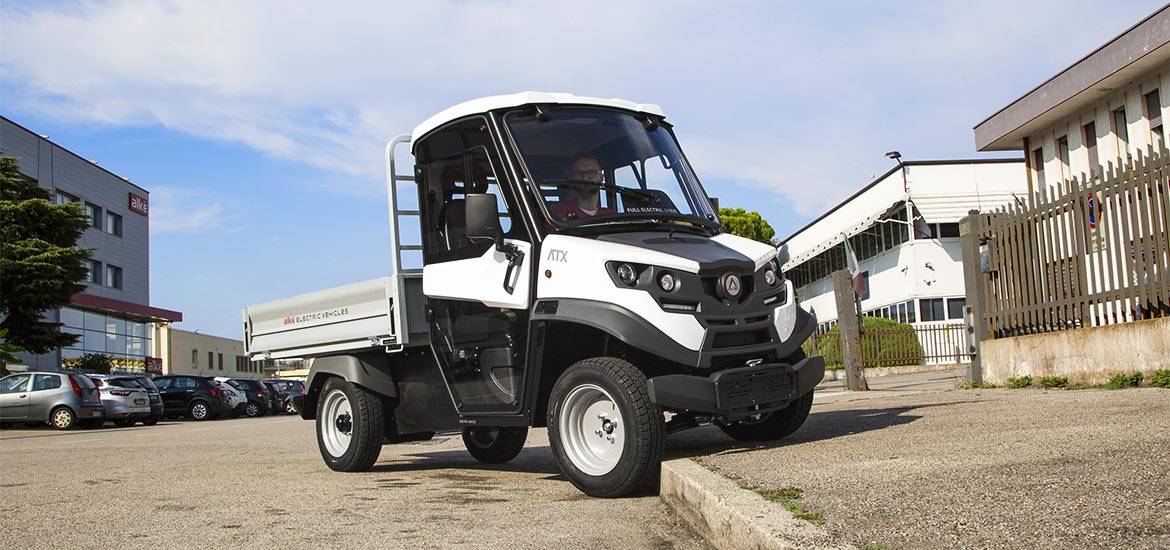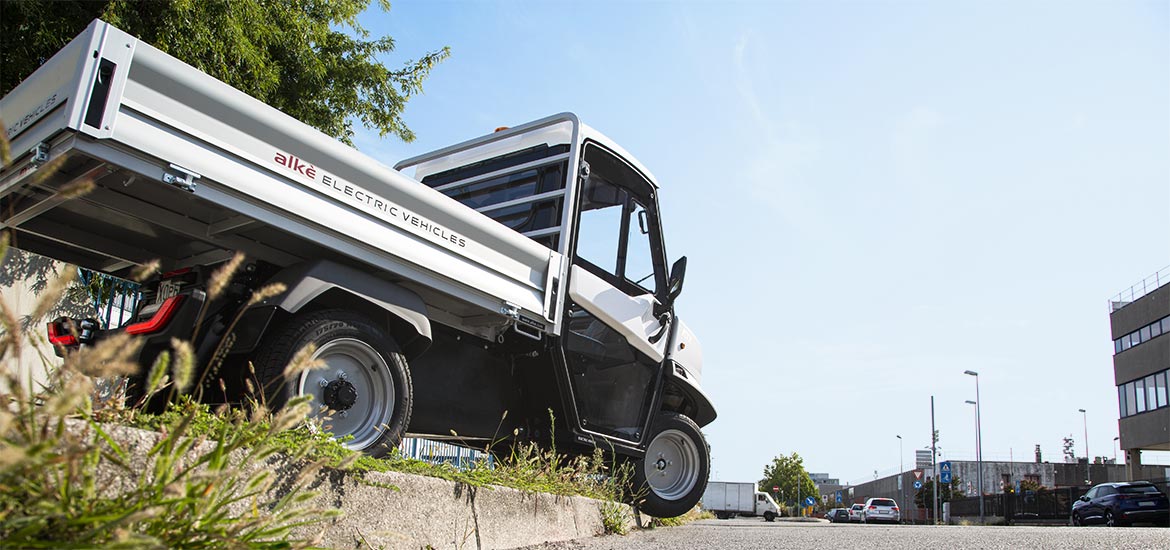
Electric utility vehicles on speed hump
Electric utility vehicles on uphill slope, we discover how to face a speed hump on an uphill slope and obtain the best from our electric utility vehicle.
How best to use electric vehicles on speed bumps
- The presence of many bumps increases the consumption per kilometre of a vehicle
- How to avoid stalling an electric vehicle
- What to do if I have a curb of 10 centimetres
- How to get off a curb with an electric car
Electric Vehicles: road bumps, steps, pavements, curbs
Climbing an uphill slope with an electric utility vehicle is a difficult task in itself as a lot of power and electric energy are needed; if a speed hump must also be passed, things become highly complicated. If the vehicle is at a complete standstill, a hump, no matter how small and harmless, seems to be a challenging uphill slope. Here is a test of an electric vehicle with a rather high bump, the slope of the bump added to that of the ramp is about 70% equal to 38.4 degrees. The climb of the ramp is about 20%. The vehicle under test is an Alke' ATX with 2-wheel drive. It is like facing a 70% gradient which is impossible for a normal 2WD electric vehicle. Alke' electric vehicles are actually able to face climbs of the order of 35%.

Final tip for electric cars: how to overcome road bumps, steps, curbs and pavements without problems
The speed humps in the video have a gradient of 50%, which added to that of an uphill slope of 20% lead to a VERY tough challenge, even if the slope is short. A minimum run-up is required, 5-10 cm are enough, and the speed hump can be passed without any difficulty. Be careful, however, to keep the speed very low especially in the presence of steps as both the vehicle's tyres and the suspension are put under strain.

